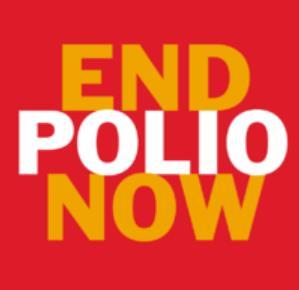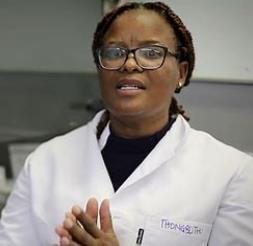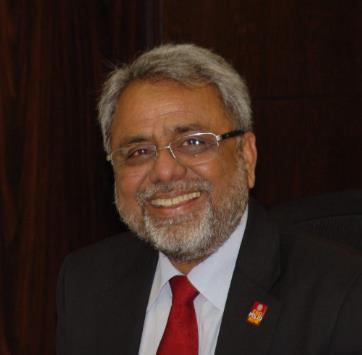
5 minute read
We are THIS close
Only Afghanistan and Pakistan are polio endemic.

Advertisement
Outbreak countries are those that have stopped indigenous wild poliovirus but are experiencing re-infection either through the importation of wild or vaccine-derived poliovirus from another country, or the emergence and circulation of vaccine-derived poliovirus.
To stop these outbreaks, it is necessary to fully implement international outbreak response guidelines.
Endemic countries, which have never stopped the transmission of indigenous wild poliovirus, can also be affected by outbreaks of circulating vaccine-derived poliovirus.
All countries remain at risk of polio until the disease has been completely eradicated from the world. Until then, the best way for countries to minimise the risk and consequences of polio infection is to maintain strong population immunity levels through high vaccination coverage, and strong disease surveillance in order to rapidly detect and respond to polio.
The Vaccines
The development of effective vaccines to prevent paralytic polio was one of the major medical breakthroughs of the 20th century. The Global Polio Eradication Initiative uses two types of vaccine to stop polio transmission inactivated polio vaccine (IPV) and oral polio vaccine (OPV).
If enough people in a community are immunized against polio, the virus will be deprived of susceptible hosts and will die out. High levels of vaccination coverage must be maintained to stop transmission and prevent outbreaks occurring. The Global Polio Eradication Initiative is constantly assessing the optimal use of the different types of vaccine to prevent paralytic polio and stop poliovirus transmission in different areas of the world.
Click here to view a short video explaining the two vaccines.
The brave women at all levels of the polio program bring us closer to a world without polio and a world with equitable opportunities for all women and girls.
In the latest “Women Leaders in Polio” series, two women are featured - ; Thongbotho Mphoyakgosi and Raquelina Mazuze - who are making great contributions in the fight against the disease.
After completing her bachelor’s degree in medical laboratory science, Thongbotho Mphoyakgosi cut her teeth in a HIV drug resistance lab in Botswana, where she tested blood samples to determine whether a patient with HIV had a mutated form of the virus which did not respond to antiretroviral therapy.

“Once you are in the lab you realize it’s not just a job, it’s more like a calling,” she says. “Someone sends samples to you, and you are the first one to see results and ask, ‘how is this going to impact the patient, the community as a whole, and then the country as a whole?’”
In 2019, just before the onset of the COVID-19 pandemic, Mphoyakgosi was transferred to the National Health Laboratory and when the pandemic hit, she was one of the first national experts to be trained by World Health Organization on how to test for COVID-19.

This period was a career highlight for Mphoyakgosi. “COVID-19 taught us a lot. When we get outbreaks now, we have learnt from COVID what can be done better,” she says.
• Click here to read more about her story
• Click here to view a short video about this remarkable woman
Following the recent outbreak of Wild poliovirus type 1 in the country, she has been helping to prepare her community for a forthcoming vaccination drive, which aims to protect nearly 4 million children in the four most at-risk provinces.
Having been involved in the health sector for decades, Raquelina Mazuze also spends her days encouraging other older people around her to stay active, eat healthily and to keep serving their community, just as she does.
According to the World Bank, people aged 65 and above represent only 3% of the total population in Mozambique. But Raquelina sees her age and many years of experience as an asset rather than a hindrance.

¨I am not afraid of getting old,” she says. “I feel proud because I am active, and my experience is key when it comes to contributing to the health of the people in my community. ¨
Raquelina doesn’t let her age restrict her ambitions either. “I want to go back to school and further my education,” she says. “I will keep moving forward. I will do whatever I am supposed to do. No one can take that away from me.”
Click here to read more about her story.
Originally posted on WHO AFRO.
The vast machinery of the global polio eradication programme is much like the inner workings of a clock – a network of interconnected people, organizations and programmes that together are more powerful than the sum of their parts. Collaboration is foundational to eradication, and every eradicator plays a part in edging the programme closer to its goals.
But in some cases, individual eradicators develop capacities or practices that enable programmatic leaps. Dr Humayun Asghar is one of those outsize drivers of progress. His initiatives around early laboratory testing of stool samples of children with acute flaccid paralysis (AFP), his efforts to create a cross-regional network of labs, and his efforts to set up a large pioneering network of environmental surveillance sites in Egypt are innovations that today power the programme’s surveillance capacity.

We know where the virus is, even in the absence of paralytic polio cases, largely thanks to his work.
In 1988, when Dr Humayun joined the National Institute of Health (NIH) in Pakistan’s capital city of Islamabad, polio was paralysing more than 1000 children worldwide every day and the Global Polio Eradication Initiative (GPEI) was just being set up. Dr Humayun spotted an opportunity to stop the spread of poliovirus by tracking it – which meant identifying which children with AFP were infected with poliovirus and which children were experiencing paralysis for other reasons.
In 1991, Dr Humayun began to contact pediatricians and, later, vaccinators, to collect stool samples from children who presented with AFP to test them for poliovirus infection. In a nod to the doctors’ and vaccinators’ contribution, Dr Humayun shared the results immediately with the reporting individual, regardless of their location.
But in some cases, individual eradicators develop capacities or practices that enable programmatic leaps. Dr Humayun Asghar is one of those outsize drivers of progress. His initiatives around early laboratory testing of stool samples of children with acute flaccid paralysis (AFP), his efforts to create a cross-regional network of labs, and his efforts to set up a large pioneering network of environmental surveillance sites in Egypt are innovations that today power the programme’s surveillance capacity. We know where the virus is, even in the absence of paralytic polio cases, largely thanks to his work.
In 1988, when Dr Humayun joined the National Institute of Health (NIH) in Pakistan’s capital city of Islamabad, polio was paralysing more than 1000 children worldwide every day and the Global Polio Eradication Initiative (GPEI) was just being set up.

Dr Humayun spotted an opportunity to stop the spread of poliovirus by tracking it – which meant identifying which children with AFP were infected with poliovirus and which children were experiencing paralysis for other reasons.
In 1991, Dr Humayun began to contact pediatricians and, later, vaccinators, to collect stool samples from children who presented with AFP to test them for poliovirus infection. In a nod to the doctors’ and vaccinators’ contribution, Dr Humayun shared the results immediately with the reporting individual, regardless of their location.
Click here to read more
WASH Rotary Action Group supports and ensures sustainable long-lasting clean water, sanitation, and hygiene programs to communities in need.



…continued next page









